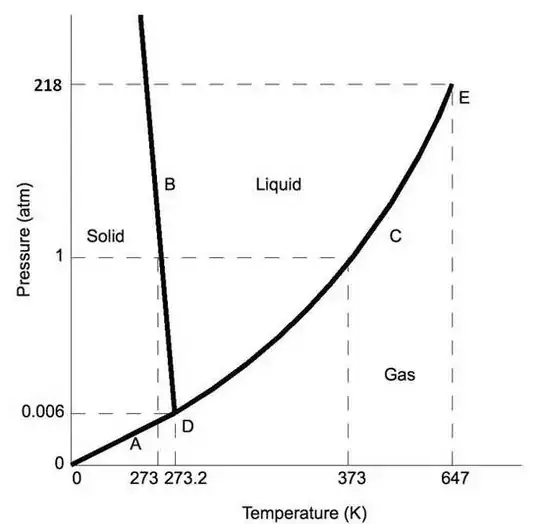Walking on ice can can be hazardous if you're wearing a nice pair of dress shoes with slick soles. The backward-sloping phase transition between water and ice cannot explain this phenomenon, and it certainly cannot explain why a hockey puck slides so easily on ice. Nor can frictional heating.
That ice is slippery is instead a boundary layer effect. That the surface of ice was somehow wetted was first proposed by Michael Faraday, but scientists forgot that hypothesis for a while. Scientists didn't have the tools to study this phenomenon until the 1960s, and it remains an area of active research to this day.
The lack of ice molecules above means the water molecules near the boundary layer can't quite organize themselves into a nice crystalline structure. Instead, those boundary layer molecules form a quasi-liquid layer at the ice/air boundary. The thickness of this layer is quite temperature sensitive. This means ice and snow stop being slippery when the temperature gets too cold. Pressure obviously plays a role, too; your dress shoes would make rather lousy ice skates. How pressure plays a role is still a bit up in the air.
The Physics Today article on the subject by Robert Rosenberg,
"Why is ice slippery?" Physics Today 58.12 (2005): 50, is highly readable and very interesting. Read it for more info. And don't be afraid to follow the links in my google scholar search.
